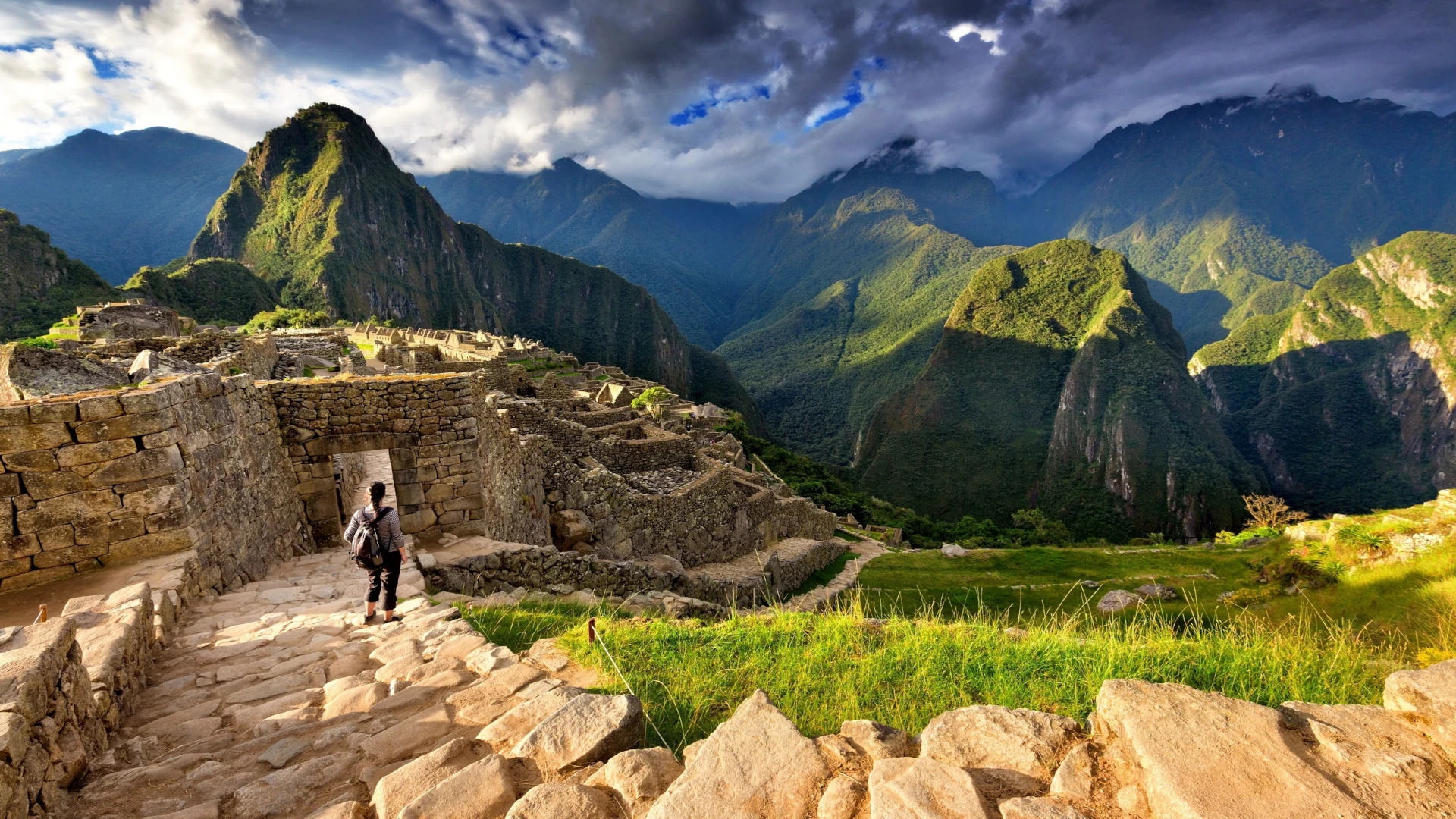
Embarking on the Inca Trail to Machu Picchu is more than just a hike; it’s a journey through time. This iconic trek not only takes you through the heart of the ancient Incan Empire but also offers breathtaking views, rich history, and a sense of accomplishment like no other. Whether you’re a corporate executive seeking a meticulously planned itinerary, a freelance photographer in search of stunning backdrops, or an academic researcher eager to delve into cultural nuances, this guide is crafted for you.
The Inca Trail is a part of an extensive network of roads and trails built by the Incas over 500 years ago. This network, known as the Qhapaq Ñan, spanned over 40,000 kilometers across the Andean mountains, connecting the vast Incan Empire. The trail to Machu Picchu is one of the most well-preserved sections, and it served as a sacred pilgrimage route to the “Lost City” of Machu Picchu.
The Qhapaq Ñan was more than just a road; it was a sophisticated network that facilitated communication, trade, and military operations across the empire. Constructed using advanced engineering techniques, these roads linked diverse terrains, showcasing the Incas’ mastery over their environment. The Inca Trail, being a part of this grand network, represents the pinnacle of their road-building expertise.
The trail was not merely a route but a spiritual journey for the Incas. Pilgrims traversed this path to reach Machu Picchu, believed to be a sacred site. The journey was a testament to their devotion, reflecting the intricate relationship between the Incan people and their deities. Today, hiking the trail offers a unique opportunity to walk in the footsteps of these ancient pilgrims.
Over the years, efforts have been made to preserve the trail for future generations. The Peruvian government, along with international organizations, has implemented conservation programs to maintain the trail’s integrity. These initiatives ensure that the trail remains a testament to Incan ingenuity while allowing modern adventurers to experience its historical grandeur.
While Machu Picchu is a renowned archaeological site, the Inca Trail is the path that leads you there. The trail itself is an integral part of the journey, offering a glimpse into the lives of the Incas and the stunning landscapes they traversed. Hiking the trail gives a deeper appreciation of the marvel that is Machu Picchu.
The Inca Trail is not just a means to an end; it is an experience in itself. Unlike simply visiting Machu Picchu, the trail immerses you in the Incan landscape, culture, and history. The sense of accomplishment upon reaching the citadel after a rigorous trek is unparalleled, making the destination all the more rewarding.
Walking the Inca Trail is like stepping back in time. Each step takes you closer to understanding the daily lives of the Incas, their architectural prowess, and their cultural practices. This immersion provides a richer context for appreciating Machu Picchu, transforming it from a mere tourist attraction into a living piece of history.
The trail winds through diverse ecosystems, from lush cloud forests to alpine tundra. The dramatic scenery is punctuated by snow-capped peaks, verdant valleys, and ancient ruins, offering countless opportunities for photographers to capture the raw beauty of the Andes.
The Inca Trail traverses multiple ecological zones, each with its own unique flora and fauna. From the tropical cloud forests filled with orchids and hummingbirds to the barren, wind-swept highlands, the trail showcases the incredible biodiversity of the Andes. This diversity not only enhances the visual appeal but also provides insight into the ecological richness that the Incas once relied upon.
At various points along the trail, hikers are rewarded with panoramic views that are nothing short of breathtaking. The sight of majestic peaks piercing the sky, combined with the tranquility of the valleys below, creates a sensory experience that leaves an indelible mark on the soul. Each viewpoint serves as a reminder of the grandeur and beauty of the natural world.
Along the trail, you’ll encounter several significant Incan ruins such as Llactapata, Runkurakay, and Sayacmarca. Each site tells a story of the Incan civilization, providing a tangible connection to the past.
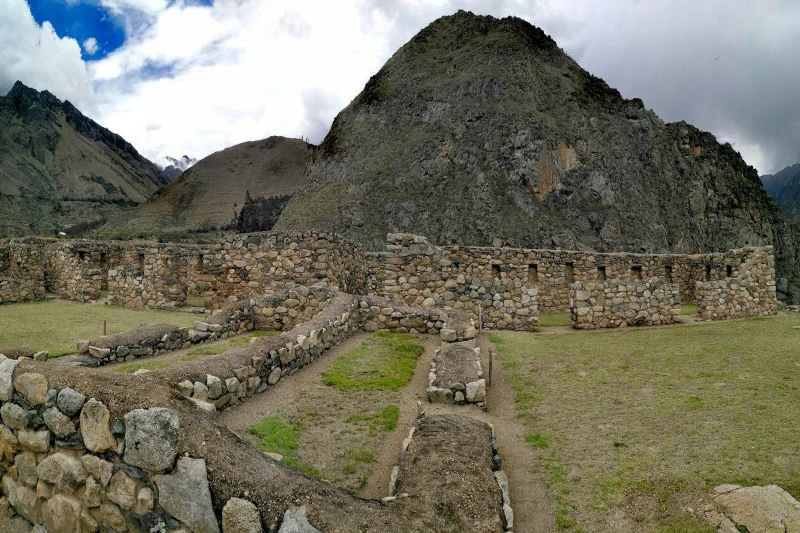
Llactapata, meaning “High Town,” is one of the first major ruins encountered on the trail. This archaeological site features impressive agricultural terraces and provides insight into the Incas’ advanced farming techniques. The strategically placed structures suggest it was a vital administrative and agricultural hub, offering hikers a glimpse into the empire’s everyday life.
Runkurakay is a small circular ruin believed to have served as a tambo, or resting place for travelers. Its unique architecture and strategic location suggest it was used as a lookout point, allowing the Incas to monitor the surrounding valleys. Exploring Runkurakay offers a deeper understanding of the Incan communication and defense strategies.
Perched on a rocky cliff, Sayacmarca offers a fascinating exploration of Incan engineering. The site’s name translates to “Inaccessible Town,” highlighting its strategic defensive position. With its maze-like layout, narrow staircases, and ceremonial baths, Sayacmarca provides a captivating glimpse into the spiritual and practical aspects of Incan life.
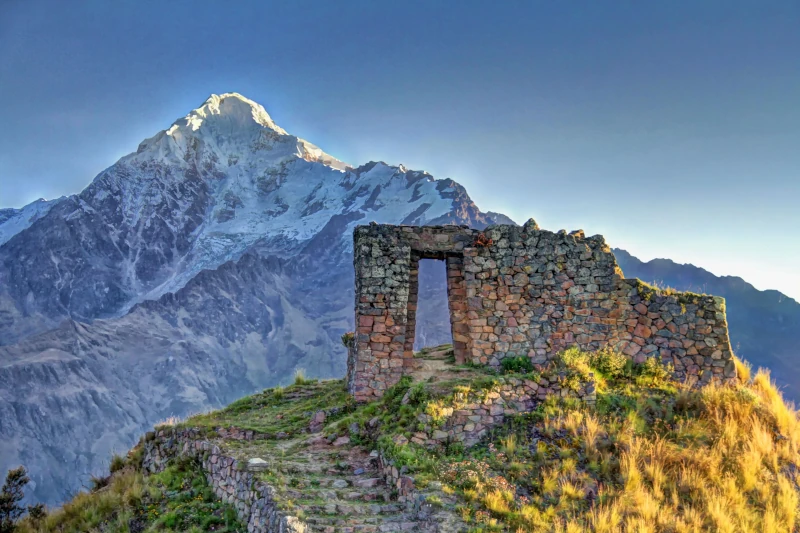
The Sun Gate, or Inti Punku, is the final checkpoint before reaching the citadel. Arriving at Machu Picchu at dawn to witness the first rays of sunlight illuminating the citadel is a truly magical experience.
Intipunku served as the main entrance to Machu Picchu and held significant spiritual importance for the Incas. As the first sunlight touched the Sun Gate, it was believed to symbolize the blessing of the sun god, Inti. For modern trekkers, reaching Intipunku signifies the culmination of their journey and the beginning of their exploration of Machu Picchu.
Witnessing the sunrise from the Sun Gate is a moment of awe and wonder. As the sun’s rays gradually illuminate the ancient ruins, the scene transforms into a golden spectacle. This experience not only marks the end of the trail but also offers a moment of reflection on the journey and the majesty of the landscape.
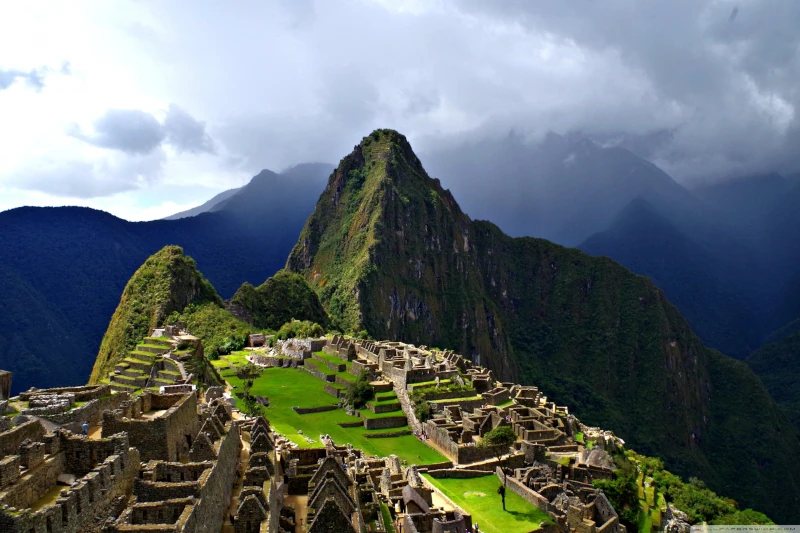
Reaching the Sun Gate is a triumphant moment for hikers, symbolizing the successful completion of the challenging trek. The sense of achievement is heightened by the anticipation of exploring the iconic ruins of Machu Picchu, making the journey all the more rewarding.
The classic Inca Trail trek typically spans four days, starting from the Sacred Valley near Cusco and culminating at Machu Picchu. However, there are shorter and longer variations to suit different preferences and time constraints.
While the classic 4-day inca trail is the most popular, alternative routes such as the Salkantay trek or Lares trek offer unique experiences. These routes vary in difficulty, duration, and scenery, allowing travelers to select an itinerary that best suits their interests and physical capabilities. Exploring these options can lead to a more personalized and fulfilling adventure.
There are even shorter versions like the inca trail to Machu Picchu in 2 days. This is experiences for people with a short time .
Although the trail is open year-round, the best time to hike is during the dry season from May to September. January falls within the rainy season, which can make the trail slippery and challenging. However, fewer crowds during this time can offer a more intimate experience.
Hiking in January presents both challenges and rewards. The increased rainfall can make the trail more difficult to navigate, requiring extra caution and preparation. However, the rain also brings lush greenery and vibrant landscapes, enhancing the trail’s natural beauty. Additionally, the reduced number of tourists provides a more serene and personal experience.
Understanding the weather patterns during January is crucial for a successful hike. Expect frequent rain showers and fluctuating temperatures, requiring appropriate gear such as waterproof clothing and sturdy boots. Being prepared for these conditions ensures you can fully enjoy the trail despite the challenges posed by the weather.
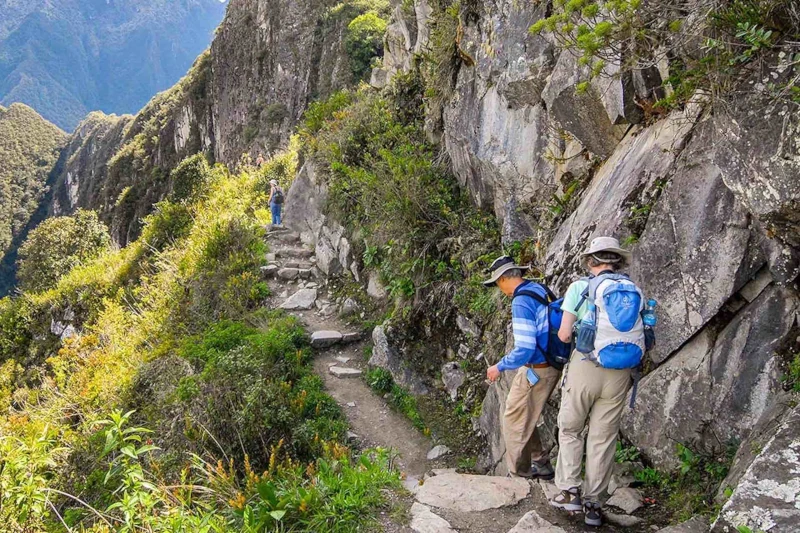
The Inca Trail is moderately challenging, with altitudes reaching up to 4,200 meters. It’s essential to be in good physical condition and to acclimate to the altitude before starting the trek. Consider spending a few days in Cusco prior to your hike to adjust.
Engaging in regular cardiovascular and strength training exercises can significantly enhance your trail performance. Activities such as hiking, running, and cycling build stamina and prepare your body for the rigors of the trail. Incorporating exercises that target leg muscles and core strength is also beneficial for managing the diverse terrain.
Altitude acclimatization is crucial for preventing altitude sickness and ensuring an enjoyable trek. Spend several days in Cusco or similar high-altitude locations to allow your body to adjust. Gradually increase your physical activity during this period and stay hydrated to aid acclimatization.
Investing in quality hiking boots and moisture-wicking clothing is crucial for comfort and protection on the trail. Layering is key, allowing you to adapt to changing weather conditions. Ensure your boots are well broken-in to prevent blisters and discomfort during the trek.
While it’s possible to hike independently, hiring a licensed guide or joining a tour group can enhance your experience. Guides offer invaluable insights into the history and culture of the trail and provide logistical support, ensuring a smooth journey.
Guided tours offer numerous advantages, including expert knowledge, logistical support, and enhanced safety. Guides are well-versed in the history and culture of the trail, providing enriching commentary and insights. They also handle inca trail permits, transportation, and accommodations, allowing you to focus on enjoying the trek. They also will offer support to get the limited numbers of permits that are offered daily.
Choosing a reputable tour operator is crucial for a successful hiking experience. Research operators thoroughly, checking reviews and credentials to ensure they meet your expectations. Look for operators that prioritize sustainability and responsible tourism practices, contributing positively to the local community and environment.
For those opting to hike independently, thorough preparation is essential. Obtain the necessary permits months in advance, plan your itinerary, and arrange accommodations in advance. While independent trekking offers greater flexibility, it requires a higher level of self-sufficiency and organization.
The Inca Trail is a UNESCO World Heritage site, and preserving its natural and cultural integrity is paramount. Follow Leave No Trace principles, respect local customs, and support responsible tourism practices.
Practicing Leave No Trace principles ensures the preservation of the Inca Trail for future generations. This includes minimizing waste, respecting wildlife, and avoiding damage to historical sites. By adhering to these guidelines, you contribute to the conservation of this invaluable cultural and natural resource.
Choosing tour operators and accommodations that prioritize sustainability is crucial for responsible tourism. Opt for providers that implement eco-friendly practices, such as minimizing waste and conserving resources. By supporting sustainable tourism, you contribute to the preservation of the Inca Trail and its surrounding environment.
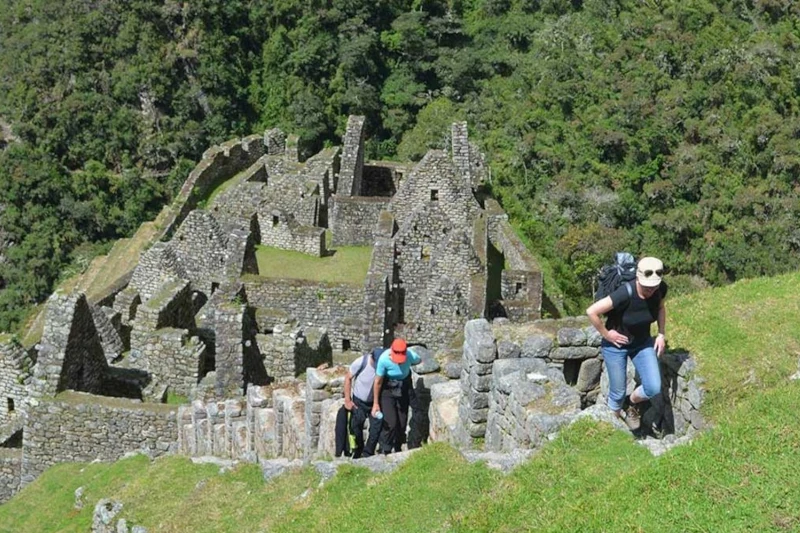
Each day on the trail presents unique challenges and rewards. The physical exertion required is balanced by the breathtaking scenery and historical sites encountered along the way. These daily experiences contribute to the overall sense of achievement and fulfillment that comes with completing the trek.
Adapting to the changing environment is an essential aspect of the trek. From varying altitudes to diverse weather conditions, each day requires careful preparation and adaptation. Embracing these challenges enhances your resilience and appreciation for the trail’s natural beauty.
Reaching key milestones, such as Dead Woman’s Pass or the Sun Gate, is a cause for celebration. These achievements mark your progress and serve as reminders of your perseverance and determination. Celebrating these moments fosters a sense of camaraderie among fellow trekkers and adds to the overall enjoyment of the journey.
Interacting with local porters and guides provides a deeper understanding of the Andean culture and Incan heritage. Their knowledge of the land and stories passed down through generations enrich the trekking experience.
Local porters play an integral role in the success of the trek. Their strength, resilience, and knowledge of the trail are invaluable assets. By engaging with them, hikers gain insights into their way of life, cultural practices, and the challenges they face, fostering a deeper appreciation for their contributions.
Guides and porters often share stories and traditions passed down through generations, offering a unique glimpse into the region’s rich cultural heritage. These narratives provide context for the historical sites along the trail, enriching the overall trekking experience and deepening your connection to the land.
Participating in the trek contributes to the local economy, providing livelihoods for many families. Supporting fair wages and ethical treatment of porters is crucial for sustainable tourism. By choosing responsible operators, you ensure that your journey has a positive impact on the communities you encounter.
The Inca Trail to Machu Picchu is more than just a hike. It’s a transformative journey that combines adventure, history, and culture. With the right preparation and mindset, this trek offers an unparalleled opportunity to explore one of the world’s most iconic destinations. There many other options for you to combine with in your itinerary, trying for example Machu picchu and Rainbow mountain get you to know the citadel and other impressive sites.
Embark on this Machu Picchu trek with confidence, knowing you have the insights and tips needed to make the most of your journey. Happy trails!